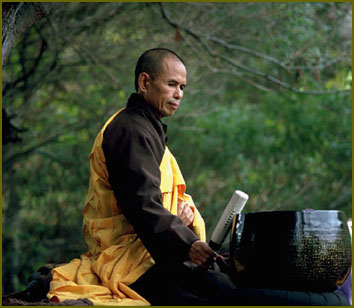WHY YOGA: My passion for yoga and mindful living is my lifelong journey of amazing self-discovery. Yoga reminds me to live in the present moment. Yoga teaches me to come home to myself, to take care of life’s challenges, to cultivate love, peace and joy and then sprinkle them onto others, on and off the yoga mat.
HOW I LIVE MY PRACTICE: Every moment that I am able to breathe is a gift of life. With breath as my anchor, I practice loving awareness in my daily activities, from deep listening, to washing dishes, to driving and walking from place to place. And, I do it with joy! I invite the essence of mindfulness to my every breath, to my every moment.
WHERE I AM MOST CHALLENGED BY MY PRACTICE: The twirling of the mind.
THE ONE THING I CAN’T LIVE WITHOUT: My breath. It gives me life and brings me home to my body and calms down the twirling of my mind.
THE BOOK I KEEP ON MY BED SIDE TABLE: Old Path White Clouds (the life and teachings of Buddha) by Thich Nhat Hanh
HOW I HAVE FUN OFF MY MAT: Travel, teach and learn. My partner and I are blessed to be on the path of mindfulness and sharing it with people of diverse cultures around the globe. We currently travel between Australia, South East Asia, and Canada to share our love of yoga, mindfulness, Reiki, Lomi Lomi massage, Qi Gong and Tai Chi training and retreats.
WHAT I KNOW FOR SURE: Nothing is permanent. If joy rises, embrace it. If suffering arises, embrace it. For everything is impermanent.
WHAT I AM COMMITTED TO: To helping people cultivate compassion for themselves and others. And, also helping people understand that all the conditions for happiness are already available to us in the here and now.
WHAT I SHARE IN MY TEACHING: My peace, joy and love for life and travelling.
HOMETOWN: My Tho, Vietnam
EDUCATION / OTHER CERTIFICATIONS: My education is still on-going. With over 2400 teaching hours and numerous yoga teacher training received, I am only beginning to see how much I have to learn.
I’m a CanFitPro-certified personal trainer, mixed martial artist, fitness and classical Pilates instructor. I’m a Shamballa Reiki educator and have trained in Thai massage and Hawaiian Lomi Lomi massage.
ANYTHING ELSE YOU WANT TO ADD: My partner, Sarah, and I founded a mobile wellness school called “saigon om.” We feel very blessed to be able to travel the globe, share our practice and meet many wonderful beings along our journey.
We follow the teachings of Thich Nhat Hanh, Zen teacher and poet, and regularly visit his monasteries (Plum Village) in various parts of the world to deepen our mindfulness practice. Committed to our mindfulness path, we are currently practicing towards ordination of the “Order of Interbeing”, which is a community of monastics and lay people who have committed to living their lives in accord with the Fourteen Mindfulness Trainings, a wonderful blend of traditional Buddhist morality and contemporary social concerns.
Photo credit: Yenny Tran http://yennyyogini.com/




























